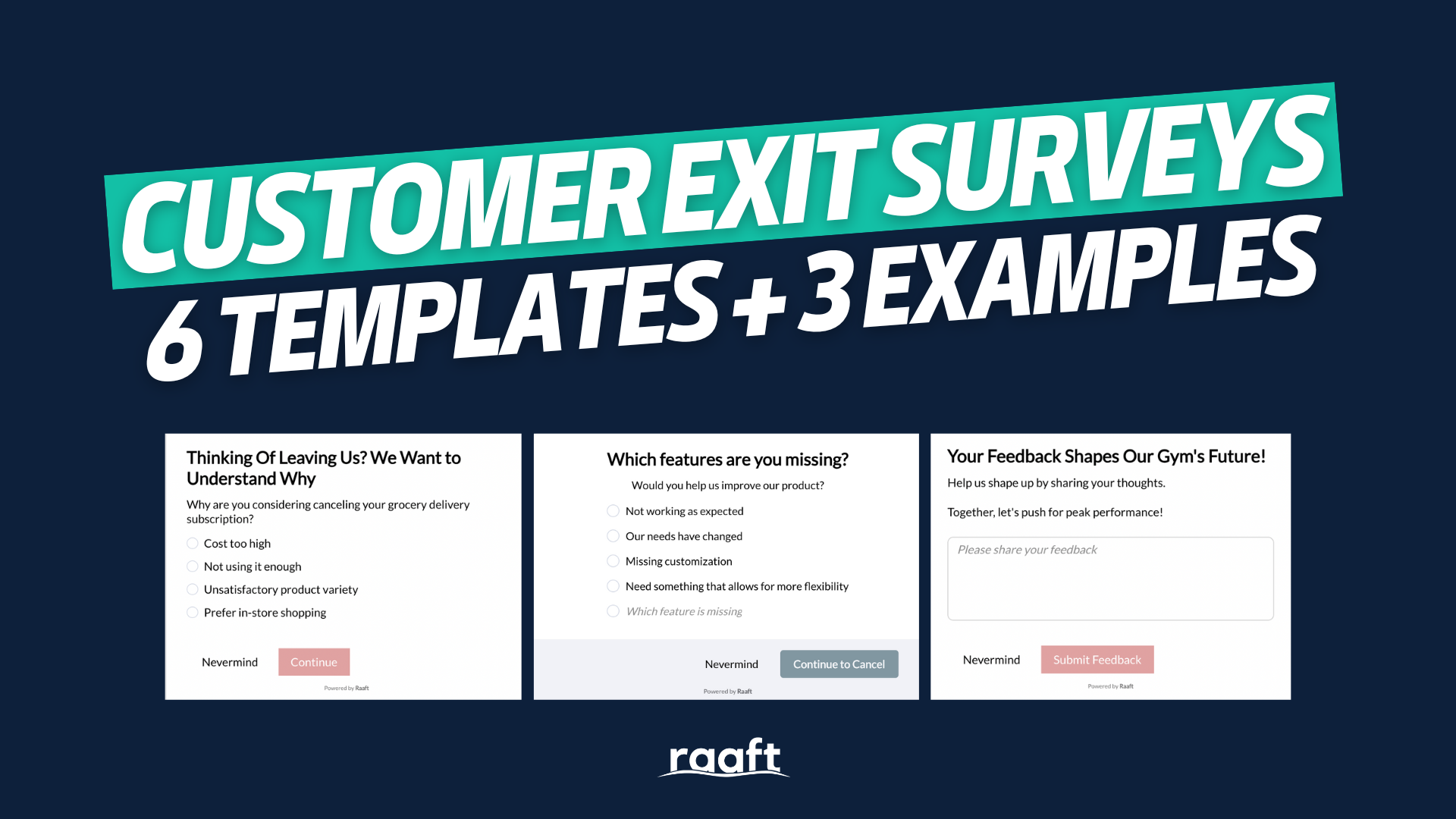Table of Contents
- Do Successful Winback Flows Hinge On Timing?
- How I Structure Winback Flow Messaging Sequences
- What Channel Mix Creates The Sharpest Lift?
- Which Winback Offers Drive Genuine Reactivation?
- Winback Flows Don’t Work Without Feedback Integration
- You Can’t Win Them Back Without Cancellation Flow Data
- Tackle Cancellation Flows First, Then Winback Flows
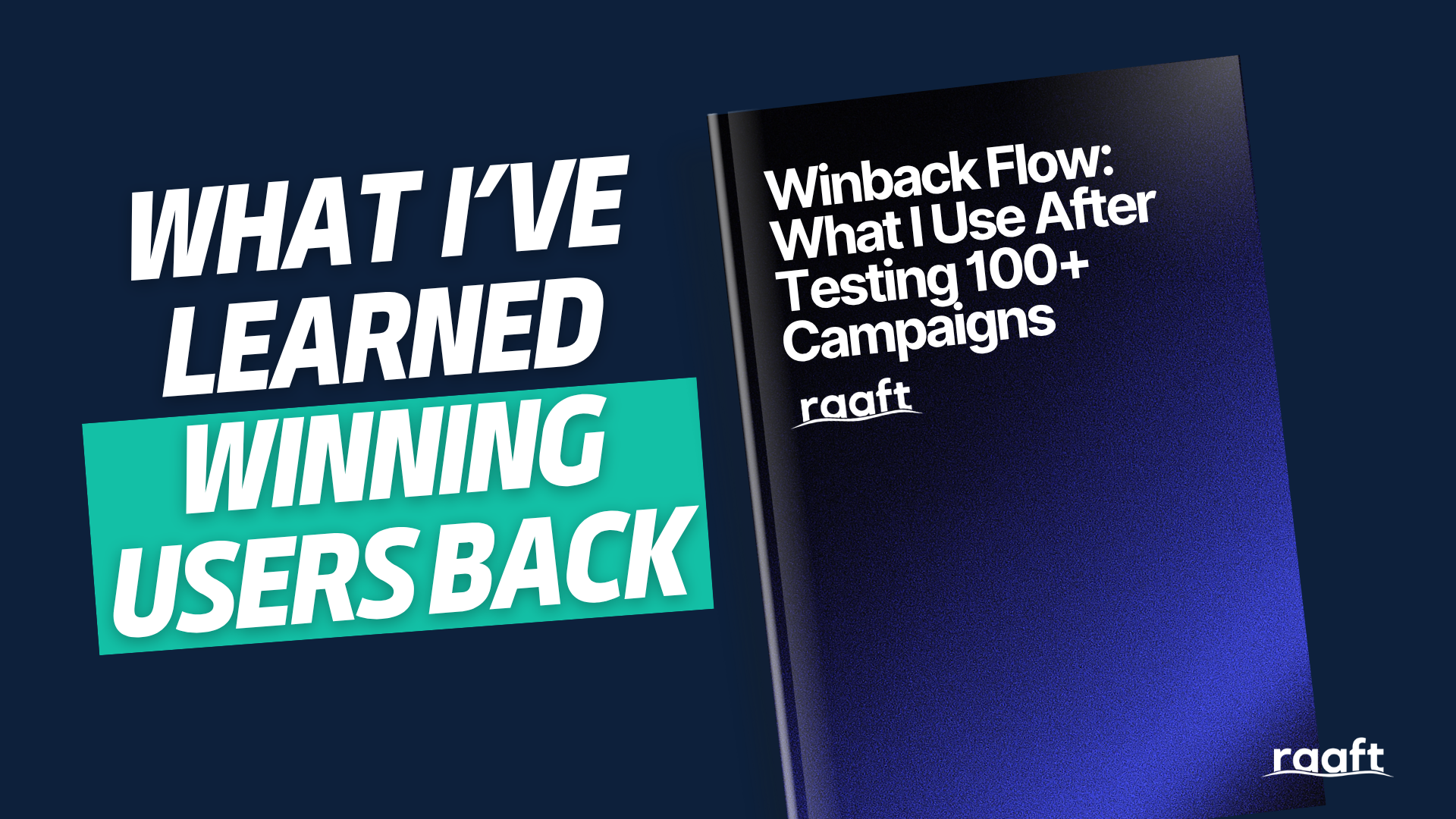
Winback flows always start with a fragile relationship because you are speaking to ex-customers.
I lead Raaft, and most of my days are filled with churn data, cancellation flows, and customer rescue attempts that would surprise anyone who hasn’t lived through SaaS retention work.
I understand why many SaaS teams are intimidated by constructing winback campaigns.
It’s one of those tasks that ends up on the back burner.
Today, I’m going to share my thoughts on what I’ve learned from constructing hundreds of winback campaigns, so you know exactly where to begin with yours.
Here’s what I want you to remember about winback flows:
The audience has already left, yet they’re still close enough to remember what they liked.
This tension drives every decision we make about re-engagement.
Do Successful Winback Flows Hinge On Timing?
Yes, timing shapes everything in a winback flow.
The time between cancellation and winback outreach is going to define three things:
- Emotional tone
- Messaging appetite
- Receptivity
What we’ve found is that short delays often create stronger responses.
Why? Because the memory of your product is still fresh in their minds.
You’ll find that extended silence creates cooler leads.
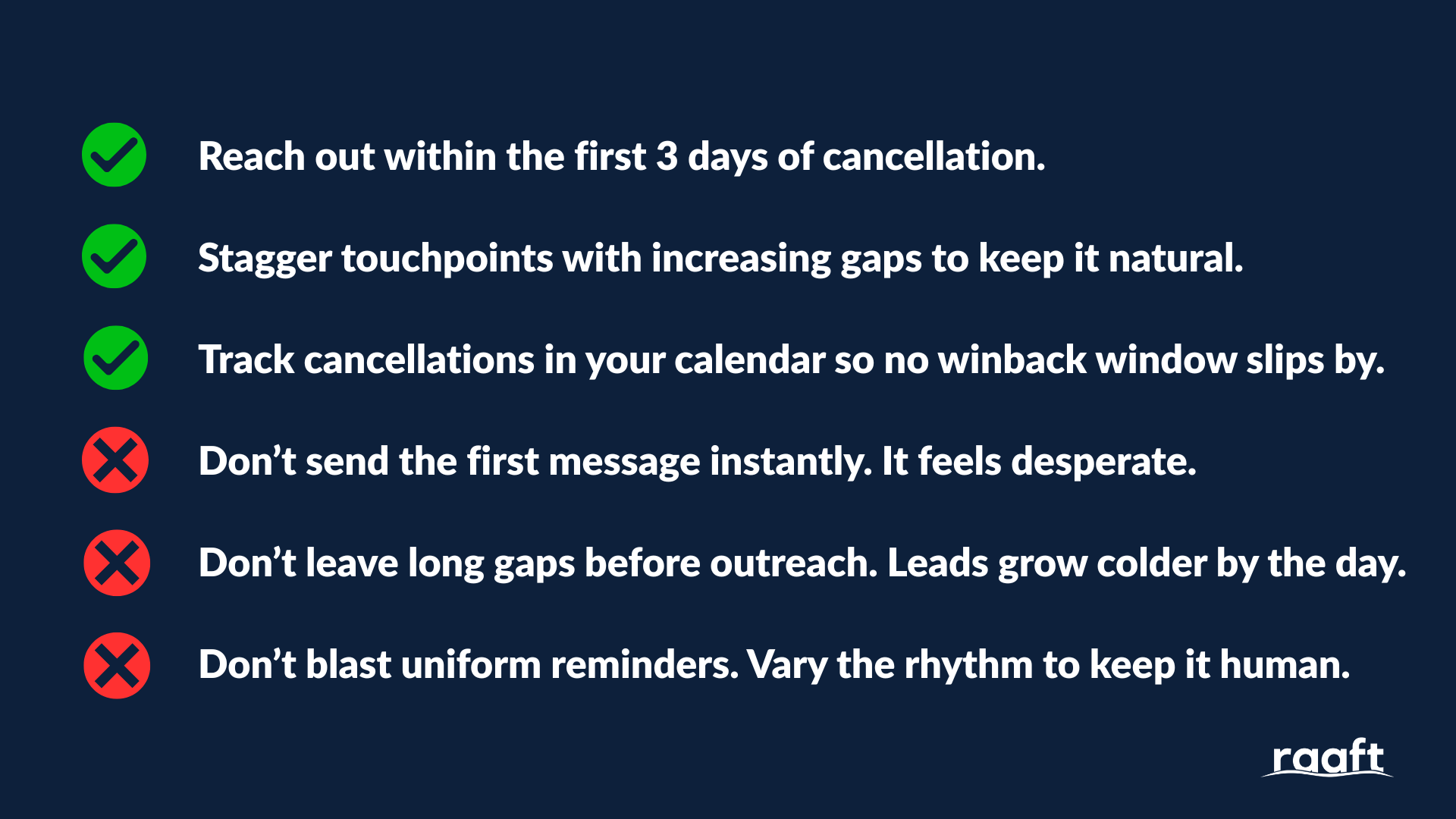
In fact, every additional day is going to add further friction.
I want you to act fast, but not too fast.
Rushing to contact the ex-customer will come across as disappeared.
It’s a balancing act.
Wait too long and you’ll disappear from memory.
As soon as a customer cancels, I need you to make a note in your calendar to trigger a winback email sequence on a specific day.
If you don’t do this, you’ll forget.
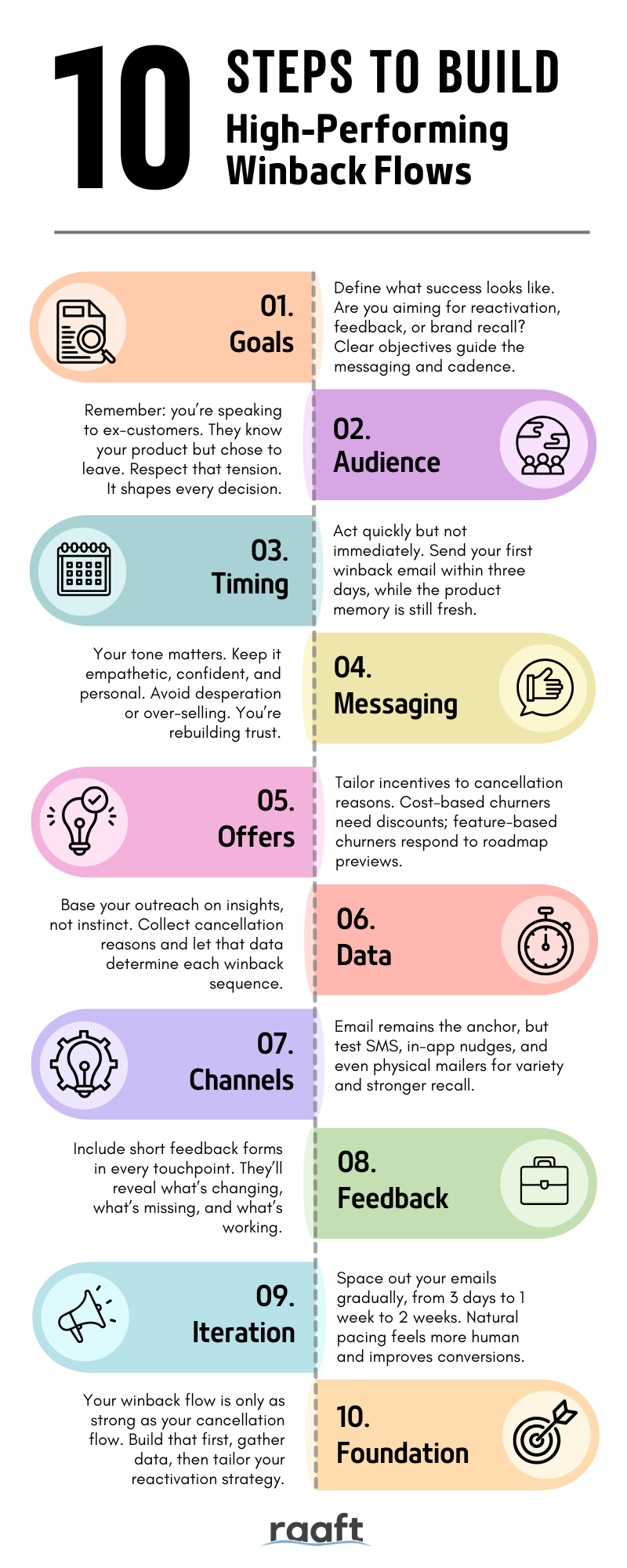
How I Structure Winback Flow Messaging Sequences
I design winback flows using layered intervals that expand outward, never uniform or rigid.
The first email lands within three days of cancellation, with a second touchpoint a few days later that introduces an incentive.
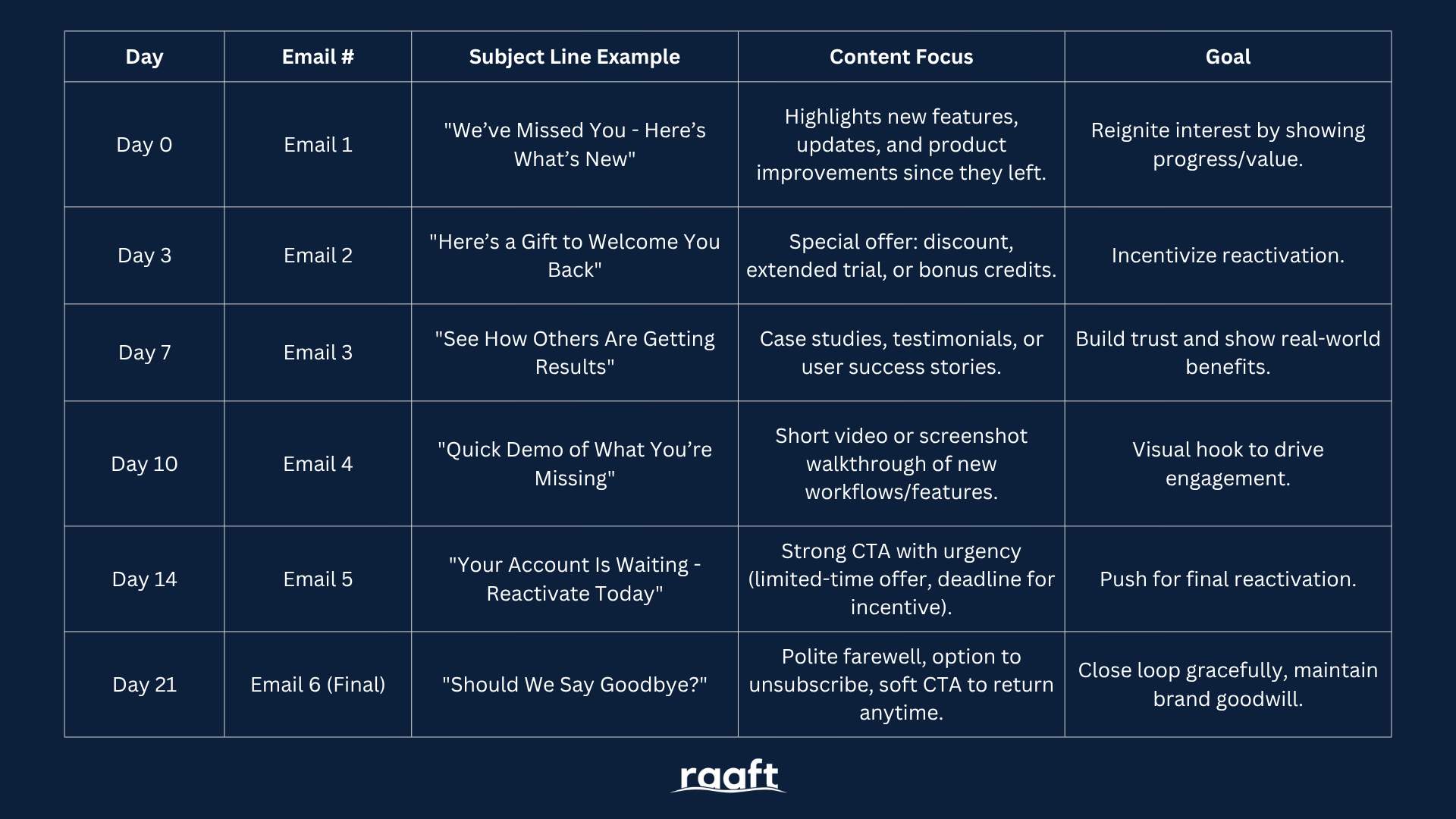
From there, the sequence gradually widens in spacing.
As you can see, it moves from a week, to 10 days, to two weeks between emails.
I do this to give subscribers more breathing room as time goes on.
We’ve found that audiences respond better when gaps widen as the sequence continues.
The pacing feels natural, not mechanical, and I’ve found that subtle psychological shift consistently improves conversion.
What Channel Mix Creates The Sharpest Lift?
I’ve experimented with a few channels for winback flows over the years, but direct email remains the center.
We’ve seen some teams experience success with SMS for urgent, time-sensitive offers.
In-app nudges reach paused users still inside the product ecosystem.
Physical mailers sound archaic, yet they drive recognition spikes in certain markets.
Generally speaking, channel diversity improves campaign resilience because no single medium can sustain attention on its own.
Which Winback Offers Drive Genuine Reactivation?
Offers must fit the cancellation reason.
Here’s what I mean:
- Users leaving for cost concerns need financial incentives.
- Feature-driven departures respond better to roadmap previews or plan shifts.
- Accounts leaving due to lack of usage may respond best to pause options.
I rely on cancellation feedback collected inside Raaft to guide which lever to pull.
We have seen that irrelevant offers cause damage rather than indifference.
Unless you’re addressing the cancellation reason directly, your winback offer is going to fall flat.
It’s not worth bothering ex-customers with a one-size-fits-all winback flow.
They see through this sort of thing.
This is an example of how I map out my game plan:
| Cancellation Reason | Winback Offer | Avg. Value Saved |
|---|---|---|
| Too Expensive | Discounted plan | $25/month |
| Missing Features | Roadmap preview with upgrade path | $45/month |
| Lack of Usage | Pause account option | $15/month |
| Setup Complexity | Dedicated onboarding call | $35/month |
I think you should spend five minutes (after reading this article) mapping out what your winback offers would look like based on cancellation reasons.
It’s a useful exercise.
Winback Flows Don’t Work Without Feedback Integration
We integrate product feedback forms into each outreach step to log motivators, feature requests, and resistance points.
Raw reactivation numbers tell only half the story.
What we've seen is that campaigns without feedback collection stagnate, while those gathering insights evolve rapidly.
This loop leads to three things:
- Product improvements
- Sharper offers
- Stronger future performance
You Can’t Win Them Back Without Cancellation Flow Data
You will have a tough time winning customers back without knowing why they left in the first place.
This is why it’s worth constructing cancellation flows that give you data on their thought process.
I use Raaft to create quick cancellation flows with multiple choice questions.

My cancellation surveys make it simple for customers to tell me why they are choosing to leave.
I then use this data to inform which winback email sequence they receive in a few days time.
If they told me in the cancellation survey that the cost was too high, I would make sure their winback offer is a discounted plan.
I recommend spinning up a cancellation flow in Raaft (it’s free to use) and testing it on customers exiting.
| Sequence Step | Engagement Rate | Reactivation Rate | Notes |
|---|---|---|---|
| Initial Email (Day 0) “We’ve Missed You - Here’s What’s New” | 45% | 13% | Strongest with users curious about product updates |
| Incentive Offer (Day 3) “Here’s a Gift to Welcome You Back” | 38% | 16% | Best results among cost-sensitive churn |
| Social Proof (Day 7) “See How Others Are Getting Results” | 33% | 12% | Works well for trust-driven churners |
| Product Demo (Day 10) “Quick Demo of What You’re Missing” | 29% | 11% | Higher engagement from feature-driven churn |
| Urgent CTA (Day 14) “Your Account Is Waiting - Reactivate Today” | 24% | 10% | Creates urgency; time-sensitive offer boosts reactivations |
| Final Contact (Day 21) “Should We Say Goodbye?” | 15% | 4% | Low yield, but occasionally triggers last-minute recoveries |
Tackle Cancellation Flows First, Then Winback Flows
I want you to avoid using “gut instinct” and guesswork to create winback campaigns.
That’s not going to work.
I’ve never seen success with winback flows by relying on guesswork.
Everything must stem from the cancellation flow.
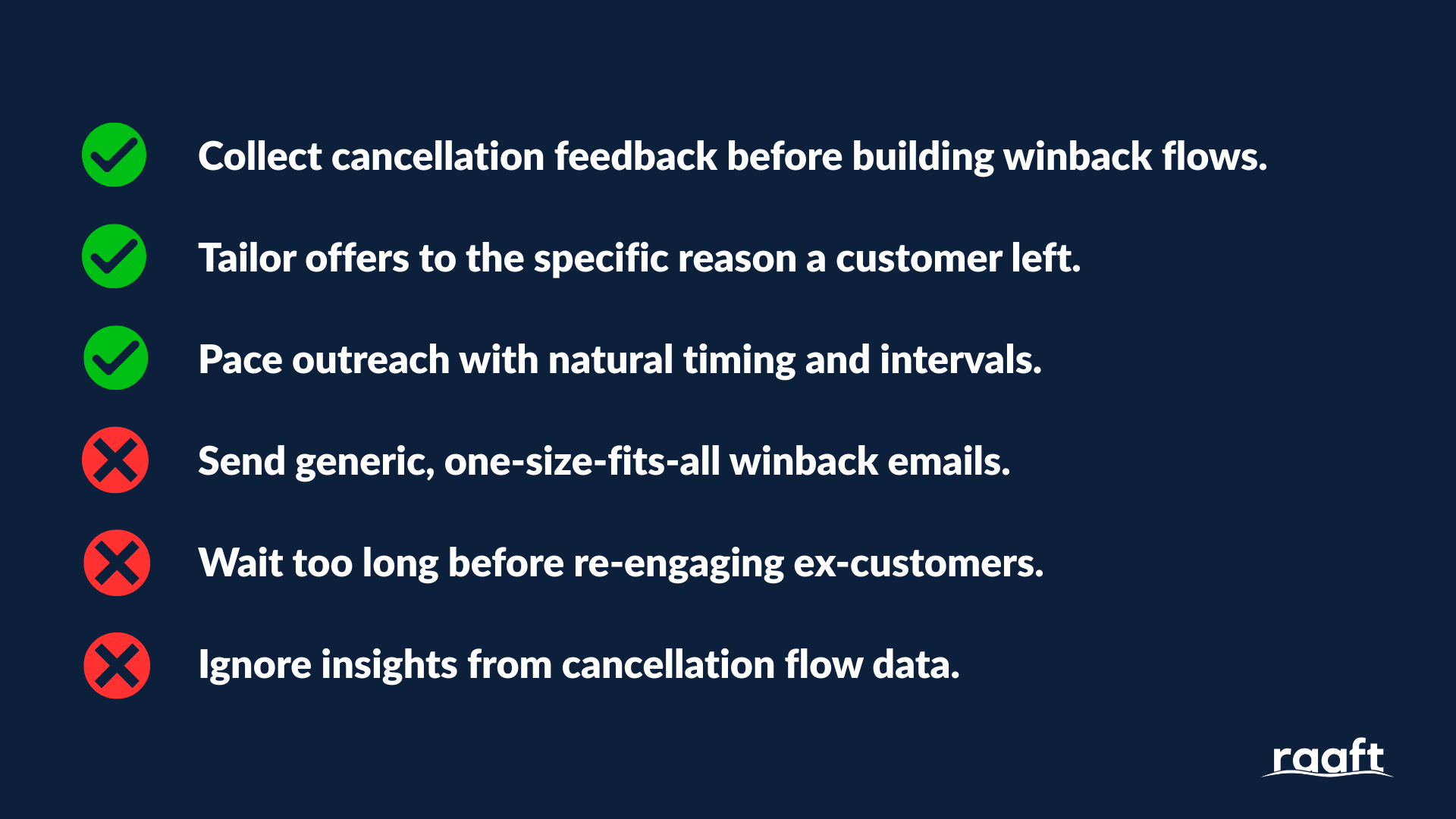
You need to focus on creating an excellent cancellation flow first.
The winback flow can come later.
The cancellation flow will help you log:
- Cost objections
- Feature gaps
- Usage challenges
- Onboarding friction
Once you know what you’re dealing with, you can confront these issues with carefully designed messaging in your winback flows.
So, before you spin up that 7-email reactivation sequence, pause. Build your cancellation flow.
Collect the reasons and categorize them. Then, and only then, structure winback outreach that speaks to what customers already told you.
Sign up to Raaft for free today and begin making cancellation flows.
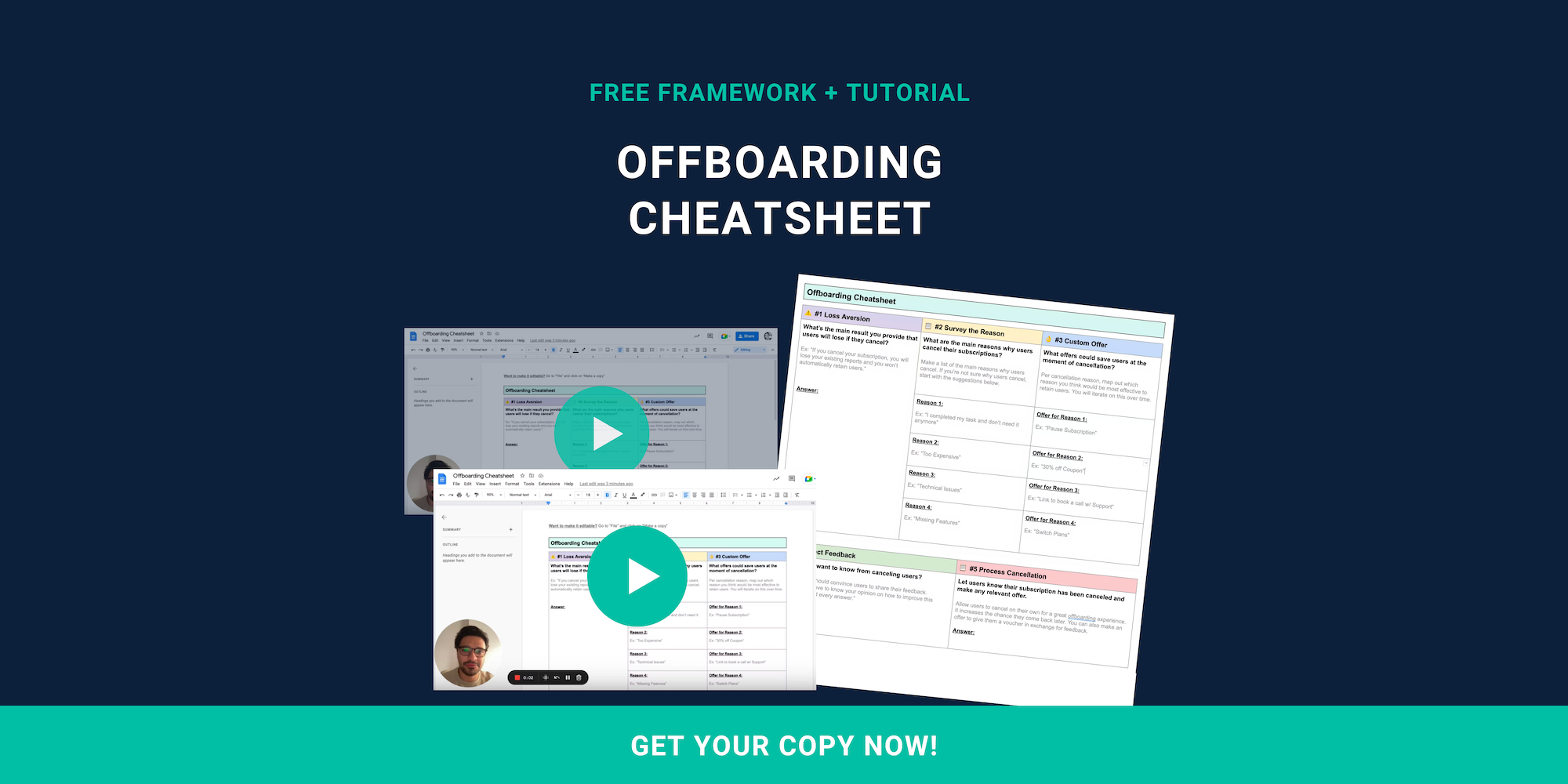
Offboarding Cheatsheet
This framework + video tutorial will help you design a better cancellation process.
Some of our featured articles

Adam Crookes

Adam Crookes

Adam Crookes
Customer Success insights in your inbox
Helping Founders and Customer Success Managers handle customer retention effectively.
We will only ever send you relevant content. Unsubscribe anytime.
